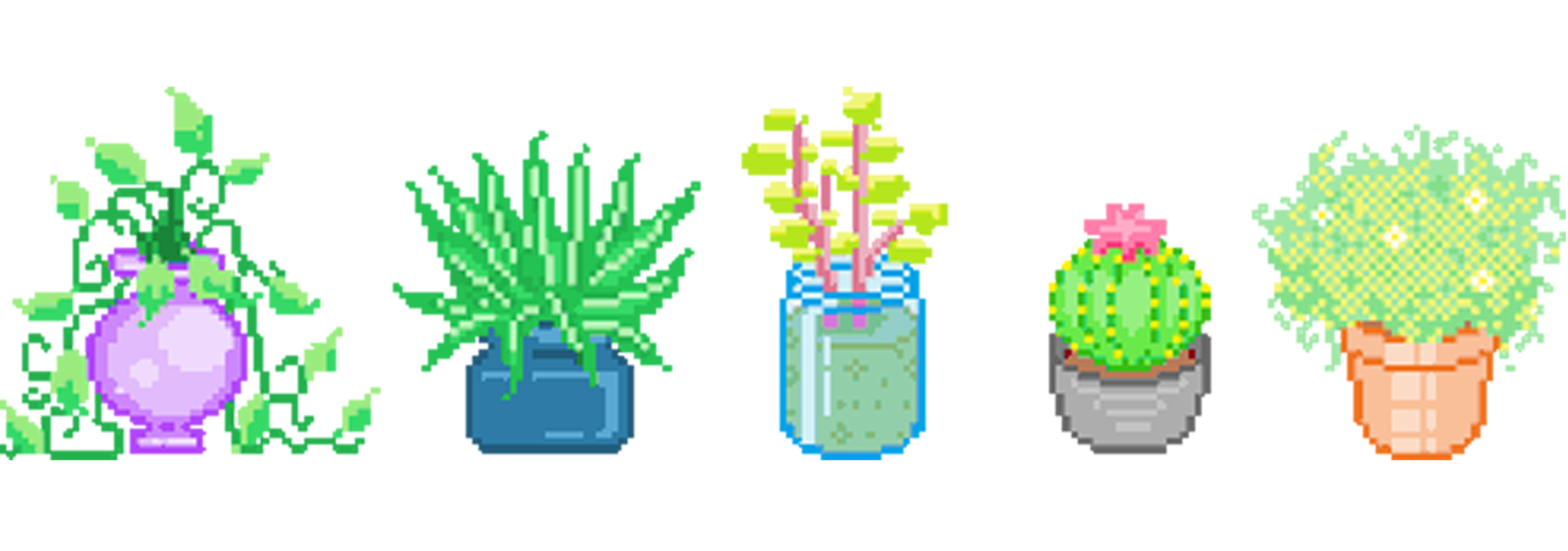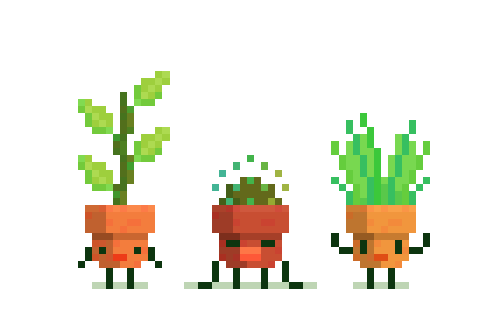Aww what cute little carnivores 😁
Houseplants
Welcome to /c/houseplants @ Mander.xyz!
In between life, we garden.

About
We're a warm and informative space for plant enthusiasts to connect, learn, and flourish together. Dive into discussions on care, propagation, and styling, while embracing eco-friendly practices. Join us in nurturing growth and finding serenity through the extraordinary world of houseplants.
Need an ID on your green friends? Check out: !plantid@mander.xyz
Get involved in Citizen Science: Add your photo here to help build a database of plants across the entire planet. This database is used by non-profits, academia, and the sciences to promote biodiversity, learning and rewilding.
Rules
- Don't throw mud. Be kind and remember the human.
- Keep it rooted (on topic).
- No spam.

Resources
Recommendations
Health
Identification
- PlantNet.org (see also: !plantid@mander.xyz)
- Seek from iNaturalist
Light Information
- GrowLightMeter
- PlantLightDB
- HouseplantJournal (Scroll down.)
Databases
- Catalogue of Life
- Perenual.com
- The Garden.org Plants Database
- Useful Tropical Plants (Interactive Database Version)
- WorldFloraOnline
- USA-NPN
- Tom Clothier's Garden Walk and Talk
- Plants for a Future
- USDA Datasets
- Permapeople.org
- Temperature Climate Permaculture: Plant Index
- Natural Capital Plant Database
- Colorado Plant Database
- SEINet
- North American Ethnobotany Database
- BCSS Field No. Lookup (collection site IDs for cacti and succulents)
- U Michigan Native Plant Database for Michigan by Region
FOSS Tools
- Common House Plants API
- HappyPlants (Monitoring App)
- PlantGeek (Care Info App)
Similar Communities
DM us to add yours! :)
General
Gardening
- !balconygardening@slrpnk.net
- !gardening@mander.xyz
- !nativeplantgardening@mander.xyz
- !gardening@lemmy.ml
- !gardening@midwest.social
- !permaculture@lemmy.world
- !tropical_plants@mander.xyz
Species
Regional
Science
Sister Communities
Science and Research
Biology and Life Sciences
- !anthropology@mander.xyz
- !biodiversity@mander.xyz
- !palaeoecology@mander.xyz
- !palaeontology@mander.xyz
Plants & Gardening
Physical Sciences
Humanities and Social Sciences
Memes

Super cool, look forward to seeing the moss spread.
Question: what is LECA?
I've been tending a volunteer moss garden in my yard for 1.5 years now. I haven't brought it in for propagation but I do think about it from time to time. Mind sharing your propagation method?
Lightweight Expanded Clay Aggregate. Basically totally inert pebbles that are very light and will retain a little water and draw a tiny bit up through capillary action. Used instead of soil for hydro and semi hydro growing.
Thank you. I'd heard/read it before and forgot. Coulda googled but conversationally obtained information tends to stick better for me.
I made a guide a few weeks ago, here it is
LECA is expanded clay balls. Similar to pumice for example, it has a lot of pores, which draw up water by capillary action. It is constantly moist, but also highly aerated and my hydroponic medium of choice.
I also made a few posts about it, including microscope pictures and explaining the concept of semi-hydro :)
Thank you so much for the guide. I want to add plumbing and add aquaponic gardens to our freshwater aquariums.
It's hard planning any big future projects since I don't know when we're going to have to flee the country.
Love pings, I just got a bunch last week! Looking forward to your update post :)
May I ask what brand of LECA you use? I've read contradictory things about pH of LECA being basic. I got a bag of Growit, and tested it with tap water - the water is indeed very basic compared to my control even after lots of rinsing and repeated soakings. I'm wondering if some brands are better at living up to claims of being pH neutral than others.
I think the brand doesn't matter much. They all work fine.
I will make a post about it, so it is easier accessible for others too.
TL;DR what I'll say:
- Expensive isn't much better per se, but there are still some with worse quality than others (unpuffed balls, etc.)
- There's "red" LECA (smoother surface, but more compact) and "grey" LECA (very lightweight, porous and floats). Both have their own (small) pros and cons, but still similar. I just mixed them by now for aesthetic purposes lol
- The size variation matters a lot. Bigger, rounder balls = more air gaps. Also, I've found smaller beads to also be less porous than bigger ones.
- You have to soak it first in pure water when dry. If you use tap water instead, it will soak up the minerals and leach them out over the next weeks and alter the water chemistry, including pH.
You can reverse this pretty fast by boiling in rain/ distilled water. The pressure from the boiling will drive out the remaining stuff from the pores. - All in all, aside from the dust and (often) leftover minerals in the beginning, it is totally inert once you've soaked it in pure water at least two times.


